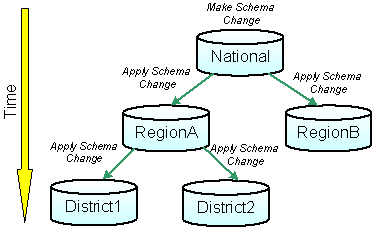
 |
Working with schema changes (ArcInfo and ArcEditor only) |
|
| Release 9.3 |    |
| Add | Change | Drop | |
| Field | Y | Y (domains) | Y |
| Domain | Y | Y | Y |
| Table/ Feature class | Y | Y (domains, add/drop fields) | Y |
| Geometric network | N | N | Y |
| Topology | N | N | Y |
| Feature dataset | N | N | Y |
| Relationship class | N | Y (add/drop fields, domains) | Y |
